After only managing to draw 2–2 against Tottenham at home last week, Manchester City returned to their winning ways after beating Bournemouth 1–3 away from home. Raheem Sterling and Sergio Agüero put their names on the scoresheet for the third consecutive time this season; scoring nine out of City’s total of 10 Premier League goals so far.
Manchester City pinned down hosts Bournemouth for the entire game, and only gave 26% of the ball possession for The Cherries. Had Harry Wilson not scored through his superb free-kick and City was more clinical in front of goal, The Citizens would return home with a bigger margin. This tactical analysis will explain how Pep Guardiola’s tactics allowed City to win convincingly against Bournemouth.
Lineups
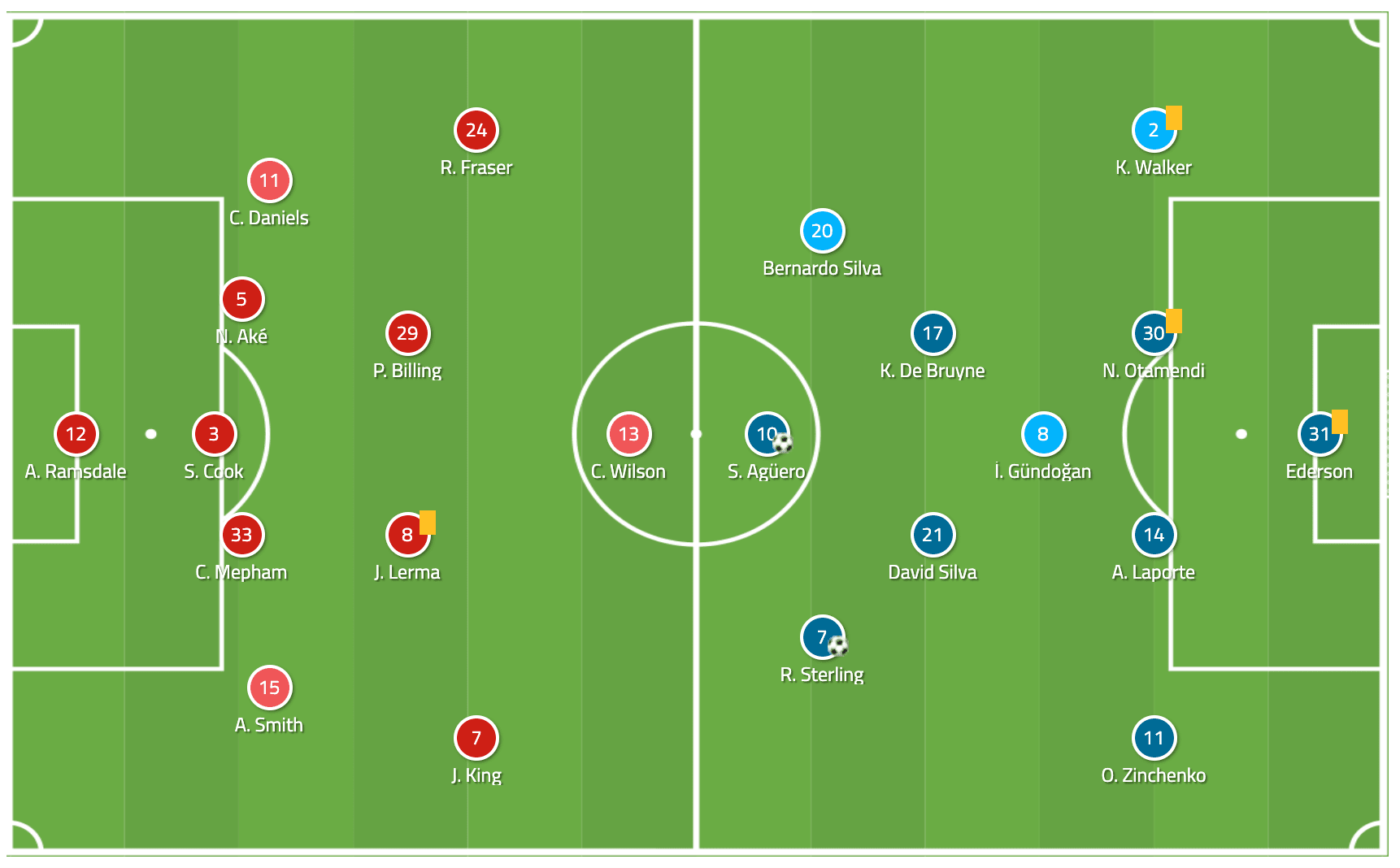
Eddie Howe picked 5–4–1 for his squad with the trio of Chris Mepham, Steve Cook, and Nathan Aké leading the backline. In the middle of the park, Jefferson Lerma and Philip Billing provide more protection for the defensive department. England international Callum Wilson started as a lone striker in the frontline. Former Liverpool players Dominic Solanke and Jordon Ibe plus Liverpool loanee Harry Wilson had to start from the bench.
Guardiola used his favourite 4–3–3 for his team. Kyle Walker and Oleksandr Zinchenko were chosen to start as full-backs, while İlkay Gündoğan started as the lone defensive midfielder ahead of new signing Rodri. Upfront, Agüero was flanked by Sterling and Bernardo Silva. Names like Riyad Mahrez, Rodri, and another new signing João Cancelo started from the dugout.
Compact Cherries
In this part of the analysis, we’re going to take a look at how Bournemouth set their defence up. The home side used 5–4–1 throughout the game, mainly by sitting deep in their defensive area.
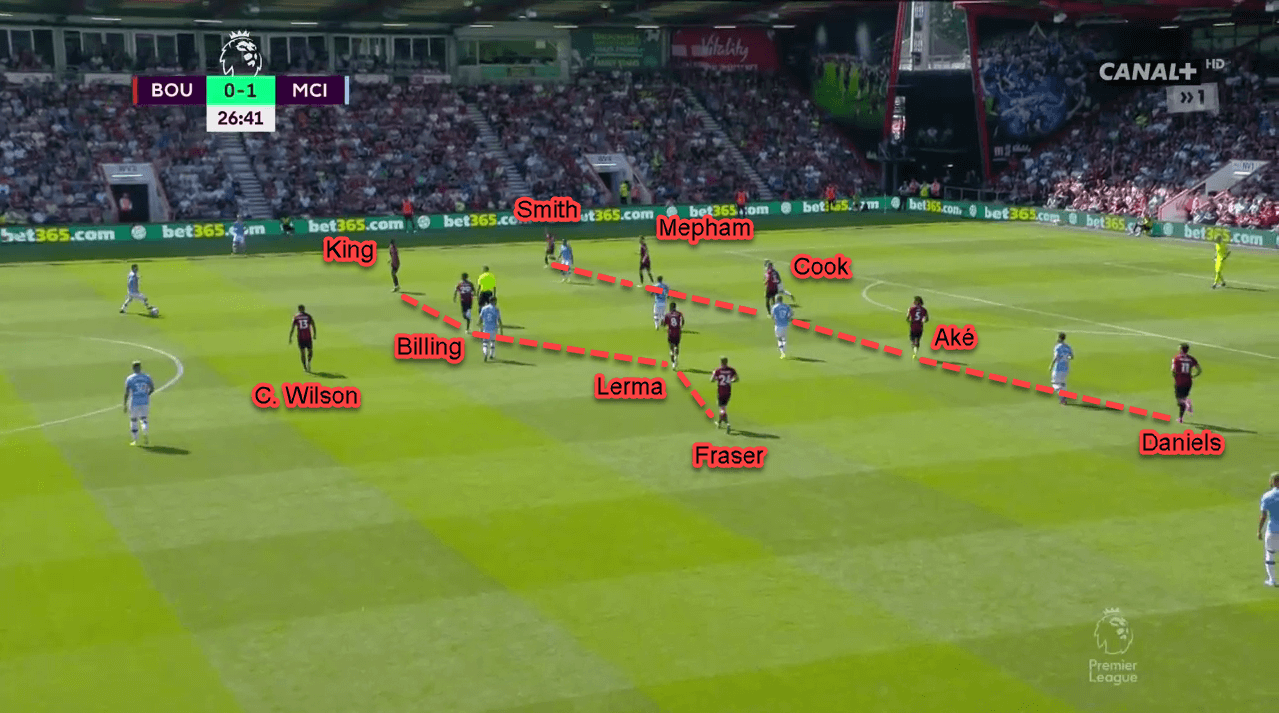
The Cherries had two hardworking midfielders in Lerma and Billing. Both of them were tasked to defend smartly in this game; from moving up to press City’s centre-backs in possession, to reading the game cleverly so they could make interceptions and give more protection to the defensive line.
As the right-sided central midfielder, Lerma was tasked to move up at times; almost alongside Callum Wilson. He did this to press Aymeric Laporte and forced the centre-back to play the ball wide. As we will discuss later, Laporte was City’s main option in their first build-up phase due to his great ball distribution. Lerma was instructed to allow Laporte as little time as possible on the ball so the Frenchman couldn’t progress play.
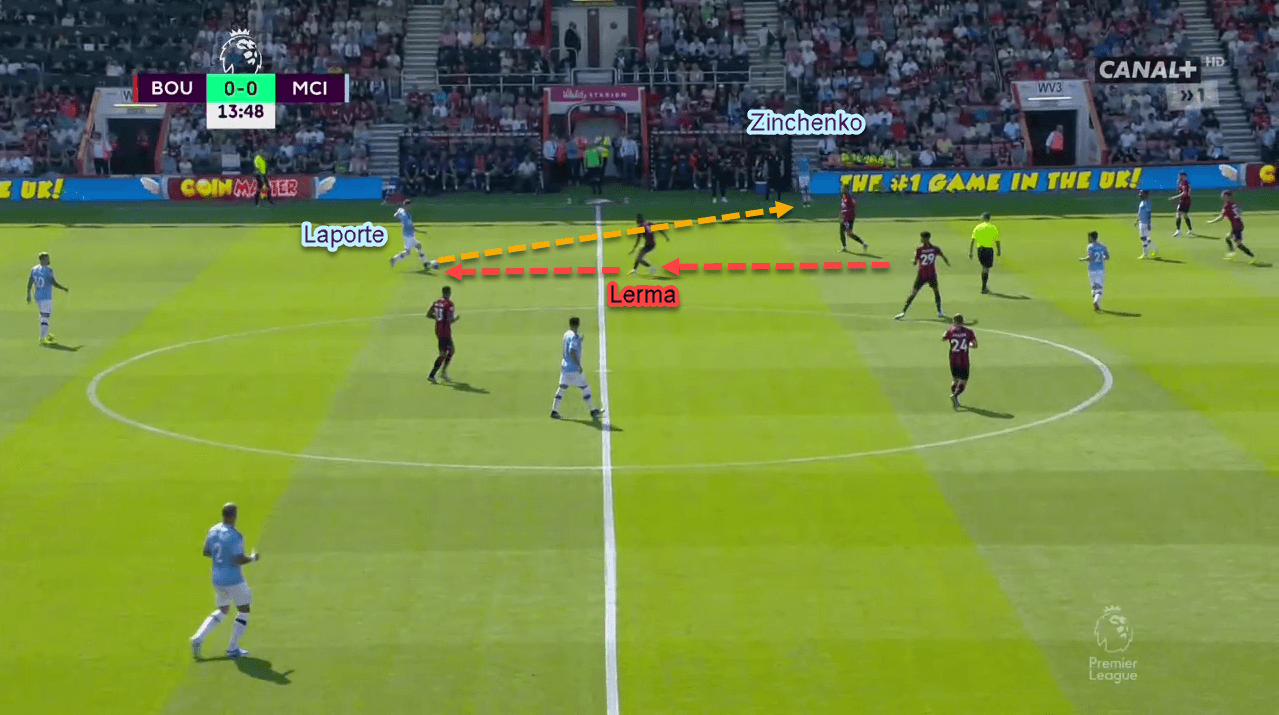
Another task given by Howe to his midfielders was to make interceptions so Bournemouth could prevent City’s attacking players from receiving in between the lines. This task was mainly given to Billing, who played alongside Lerma. When Lerma moved up, Billing would usually cover the space behind his partner. His good game-reading ability and spatial awareness allowed him to make some brilliant interceptions to stop City’s attacks.
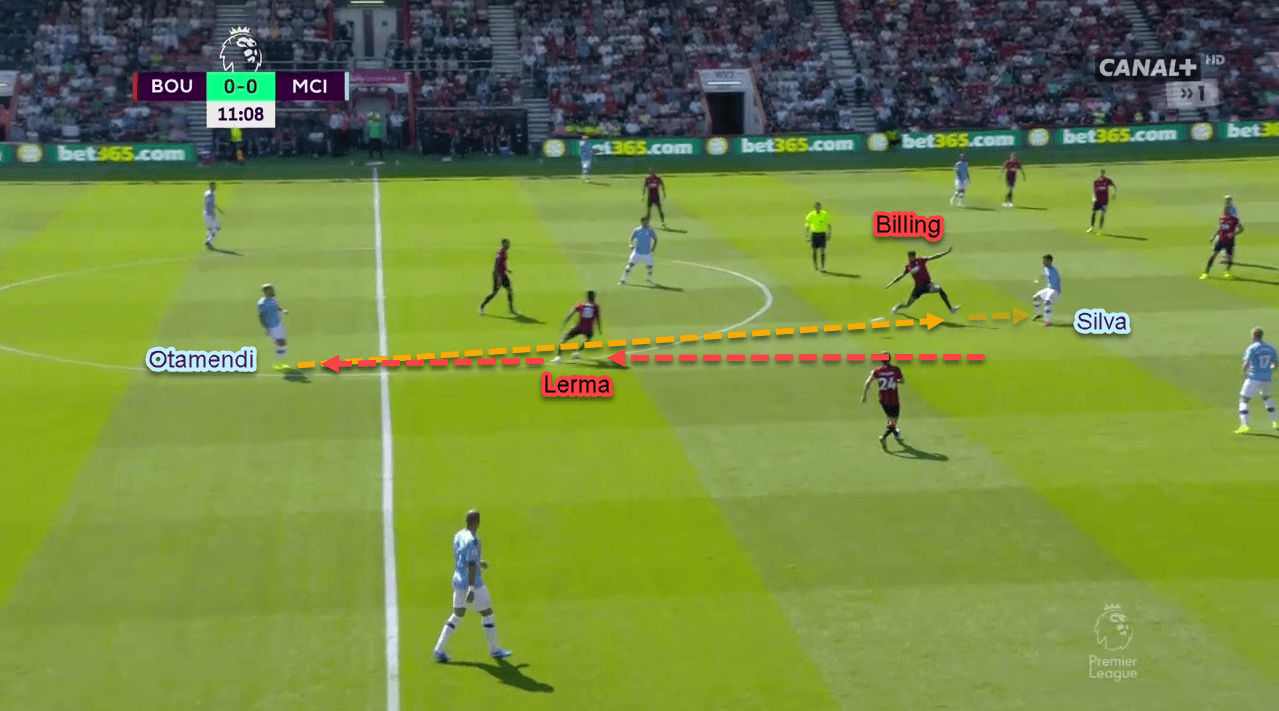
Clever City in space
However, Bournemouth’s block wasn’t perfect. They’d allow some space in between the lines, which was exploited numerous times. City would put at least two players in between the lines to exploit that area before finally the receiver combines with his teammates or makes an incisive final ball into the box.
The task of feeding the ball from the back to the attackers was given mainly to Laporte. Laporte possesses great vision and a sharp passing ability thus enabling him to find attacking players in between the lines. Another reason he was given this task was that Gündoğan was often closely marked by Callum Wilson.
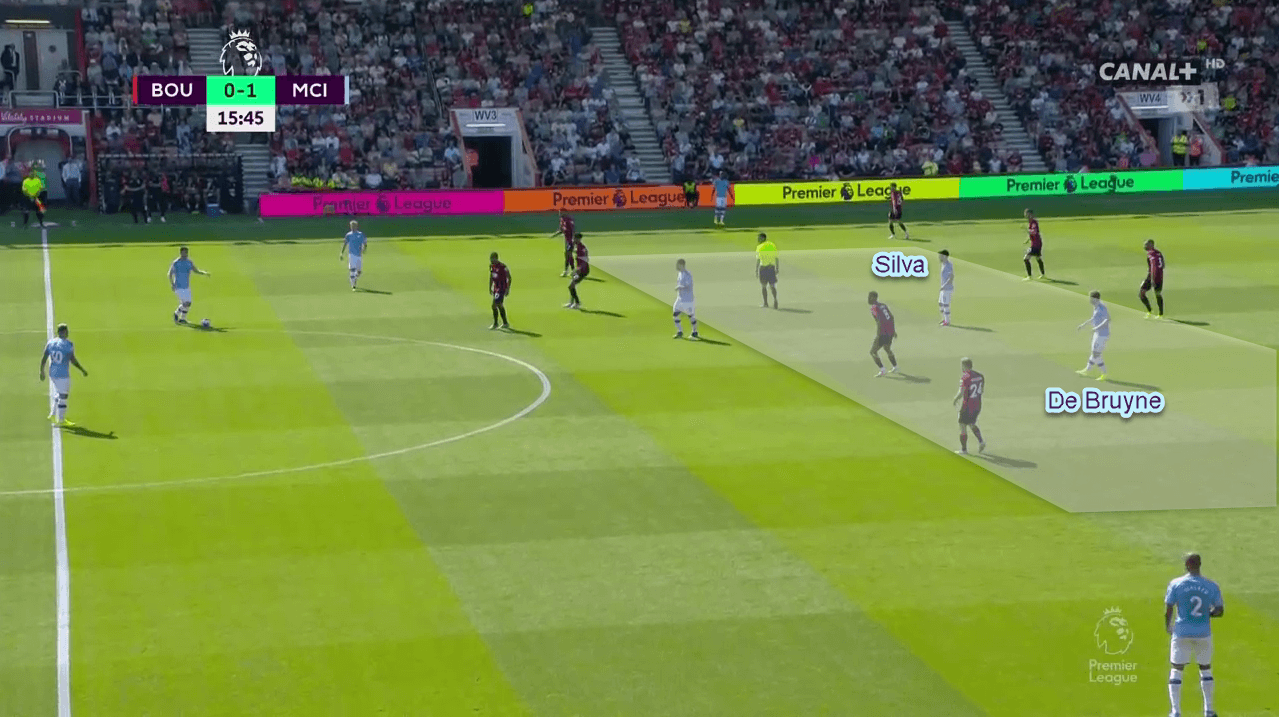
City would put at least two of their attackers in between the lines to take advantage in that area. Kevin de Bruyne, Bernardo, Sterling, and Agüero often rotated between themselves; only Silva stayed regularly there. They did that was mainly to disrupt the defence’s focus with their movements, and also conserving Silva’s energy.
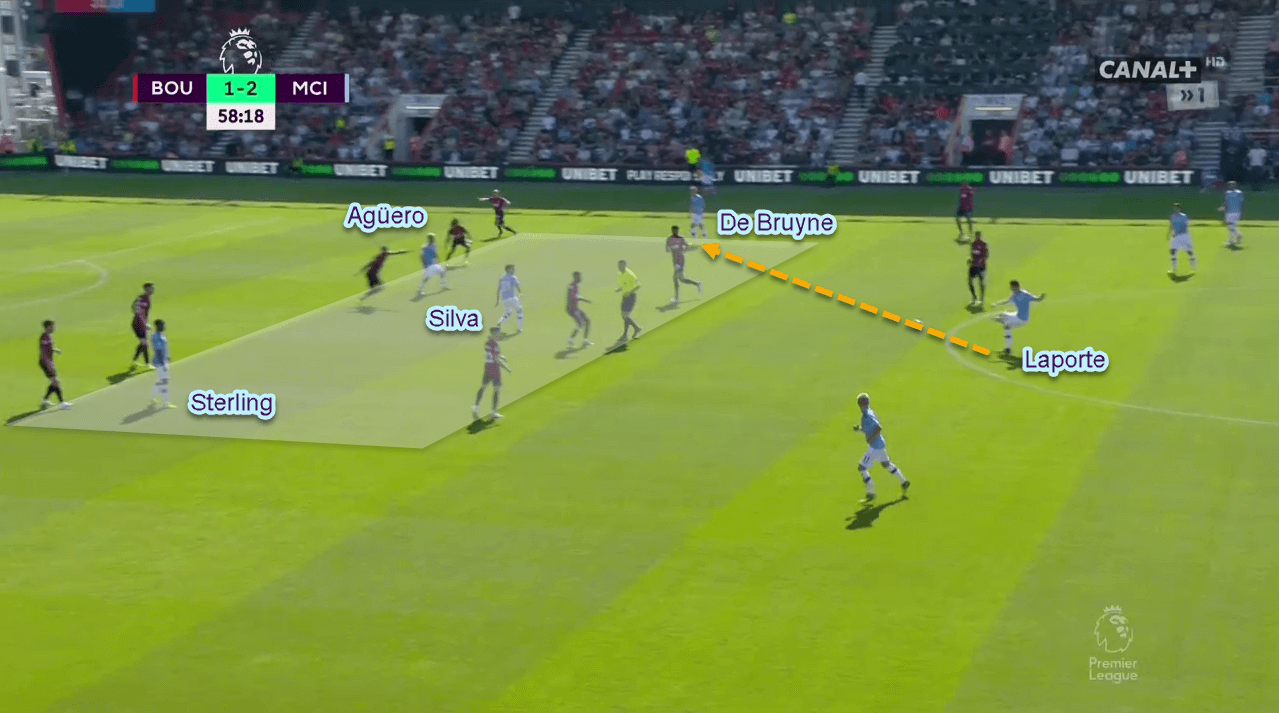
With no responsibility to switch positions with others, Silva was completely focused inside the left half-space. He also moved centrally, but only if Agüero has dropped or drifted wide. In those areas, Silva’s ability in tight spaces and his great range of passing helped City a lot; especially when he was able to release Sterling in behind.
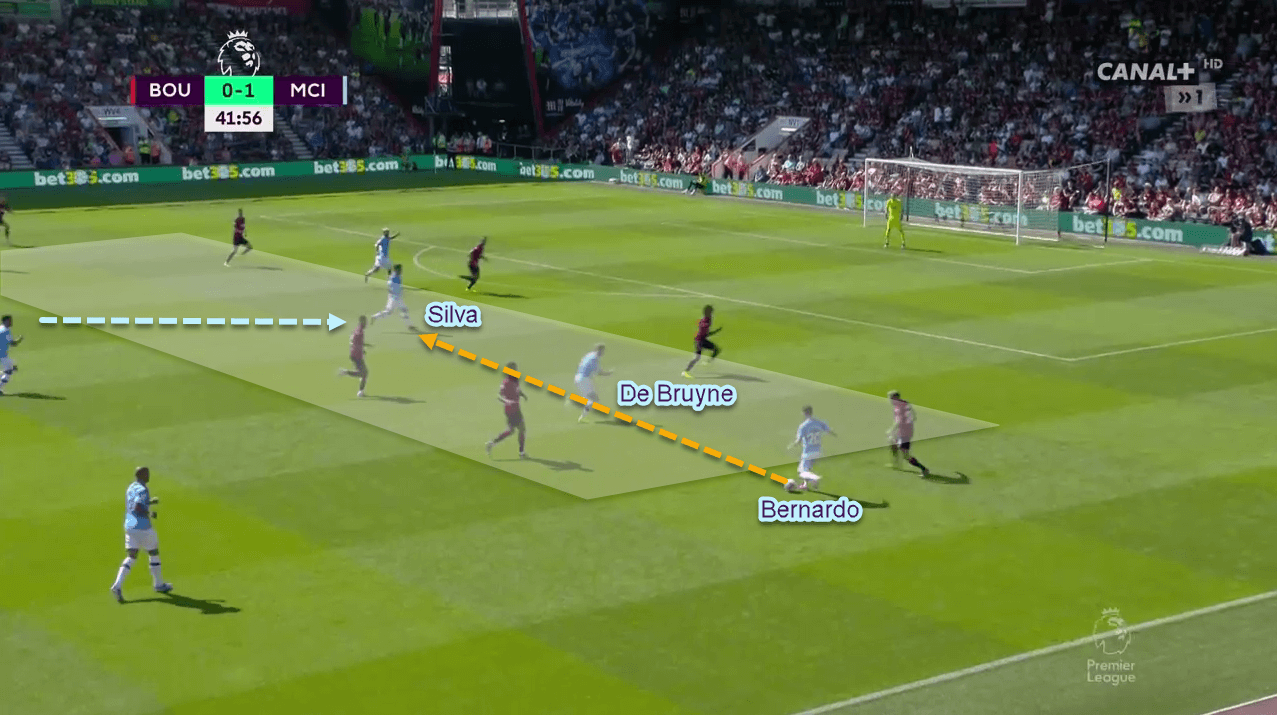
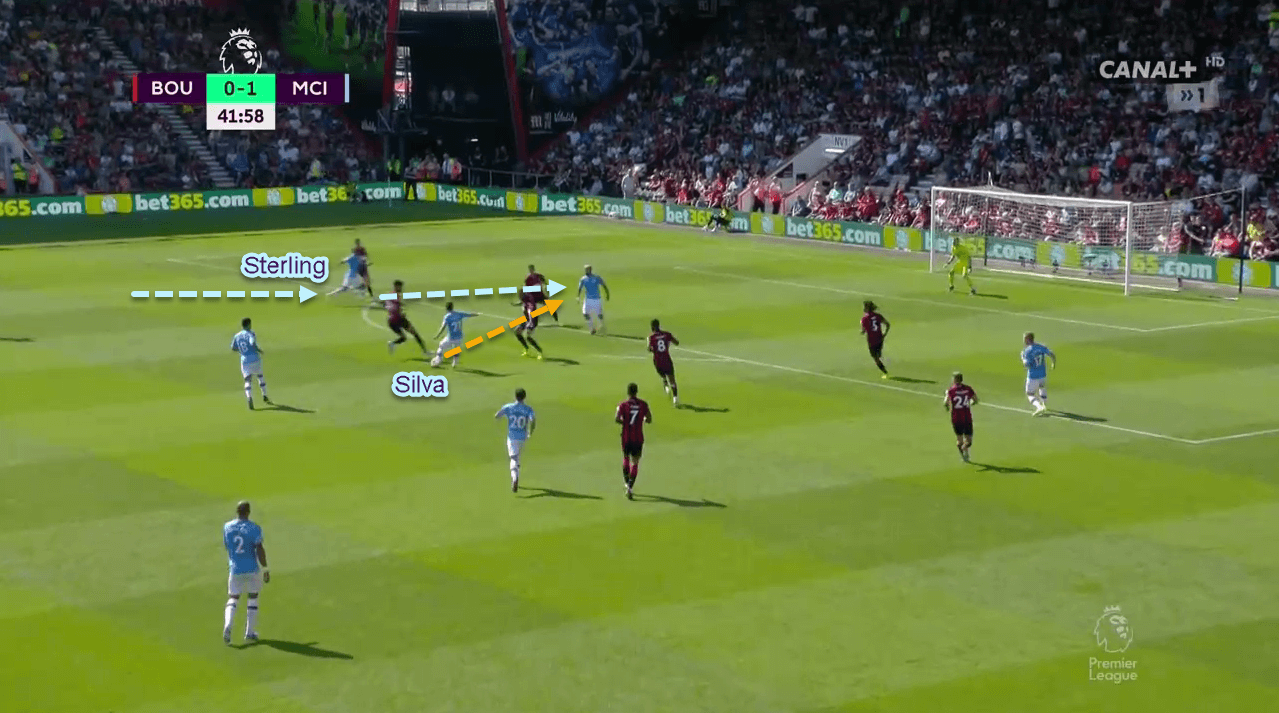
Outstanding overload by Silva and co.
As mentioned previously in this analysis, Silva was pivotal in City’s attacks. Furthermore, it was Guardiola’s brilliant tactics that allowed Silva to maximise his skillset in the final third. Guardiola tasked his attackers to overload the left half-space as one of their main weapons to unlock Bournemouth’s packed defence.
Guardiola instructed Sterling, Silva, and Agüero to occupy the left half-space in between the lines. He did this to utilise the space left by Lerma, who actively steps up to close Laporte down. In that space City often had numerical superiority because they would have Sterling, Silva, and Agüero against Mepham and Cook.
Most of the time, Mepham would stick to Sterling closely. Alongside him, Cook had to face both Silva and Agüero at the same time; giving a dilemma on who to follow. On the opposite side, Billing was not always perfectly positioned due to his focus on another half-space; therefore couldn’t help Cook facing Silva and Agüero.
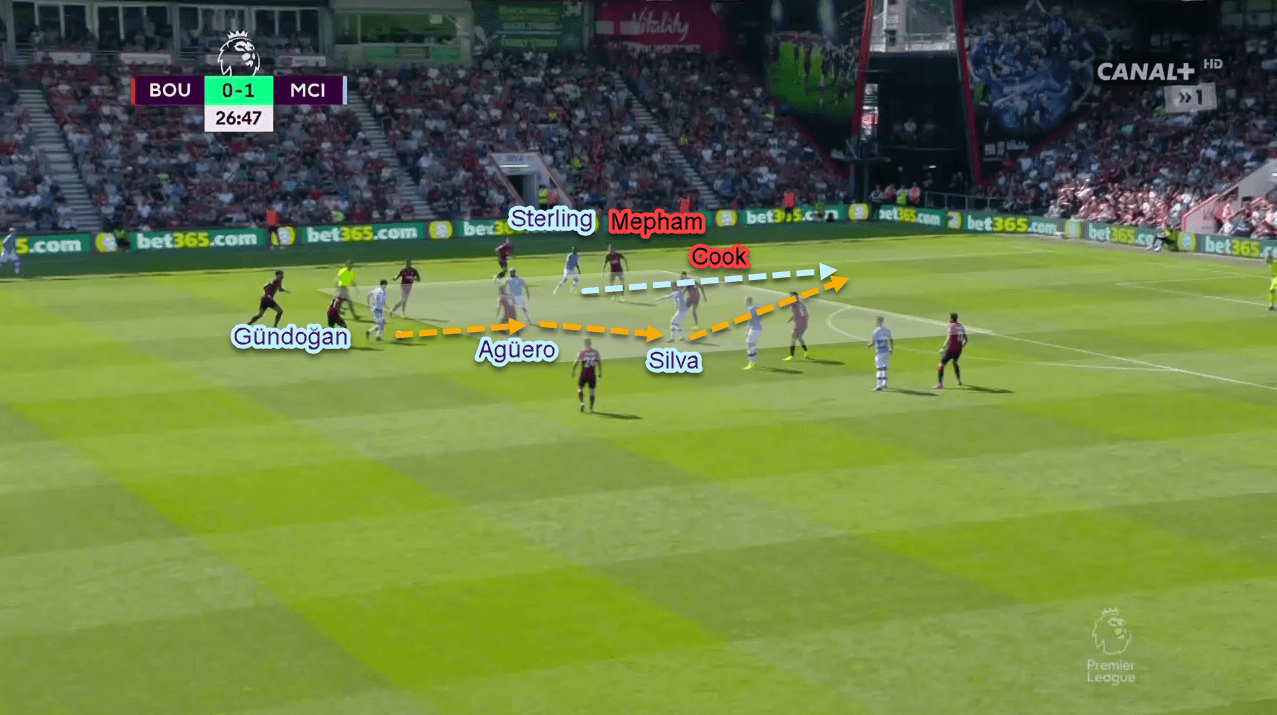
If Laporte (or Gündoğan) was able to find Silva or Agüero, the receiver had two options. First, combine with each other before releasing Sterling in behind; second, send a through-ball to Sterling with their first touch. Lucky for them, Sterling was also very smart in positioning himself in Mepham’s blind-spot so the winger could win almost all of his sprinting duels against the centre-back.
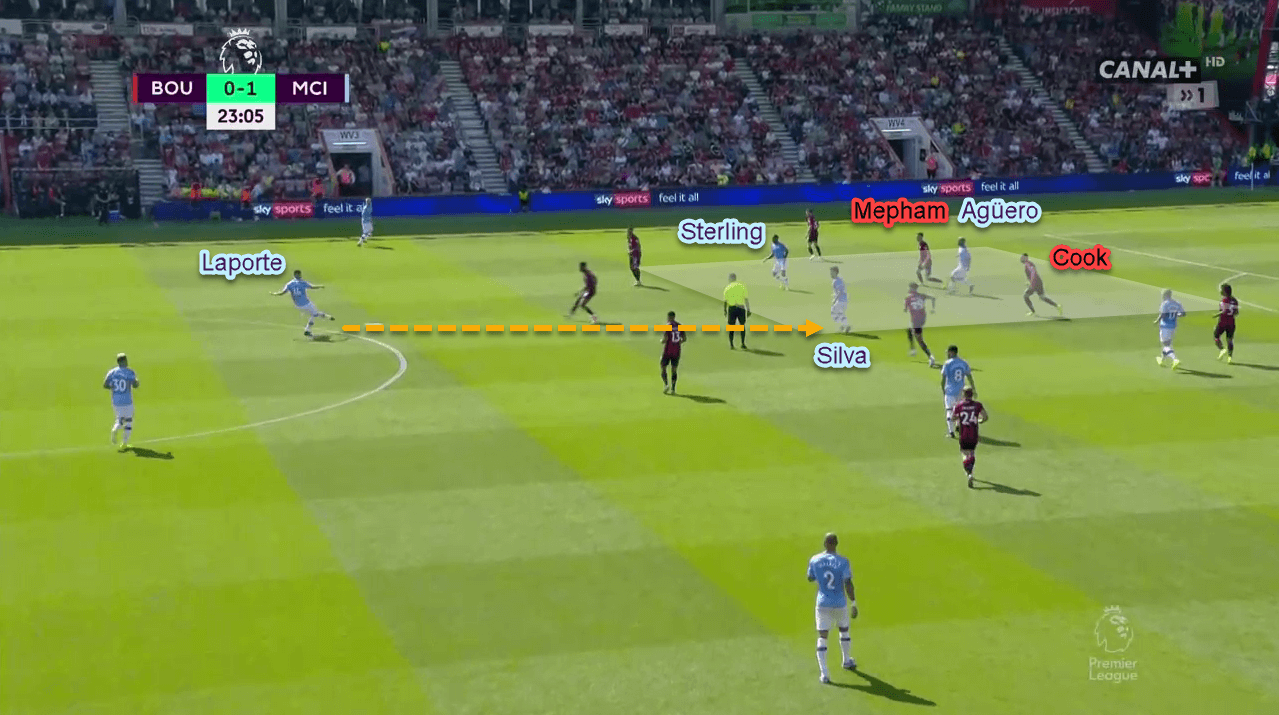
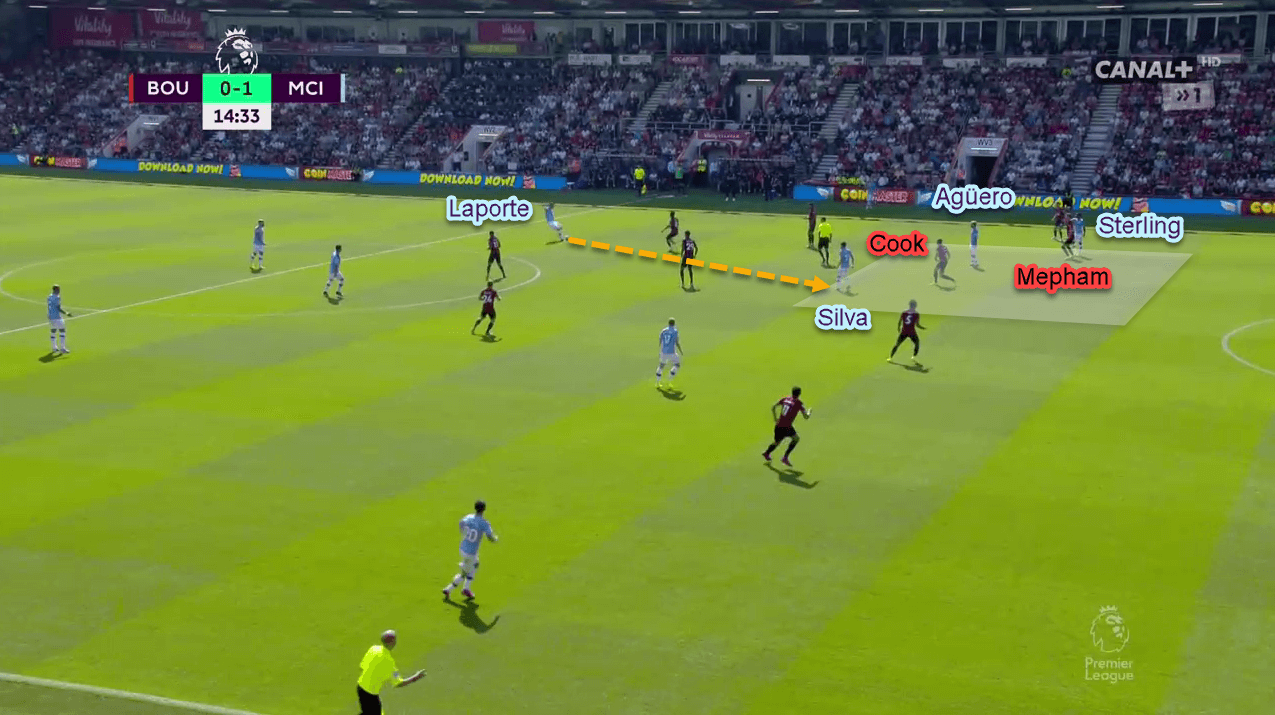
Bournemouth fight back
With a minimum share of ball possession, Bournemouth relied a lot on counter-attacks. One of their tactics was utilising Joshua King’s pace and dribbling skill in their transitional attacks. King started the game as a right-winger, but due to Charlie Daniels’ injury, he moved to the left-wing; with Harry Wilson coming on the right flank. On the left wing, King got more chances as he often exploits the space left by Walker, who likes to roam forward; a luxury Laporte didn’t afford him.
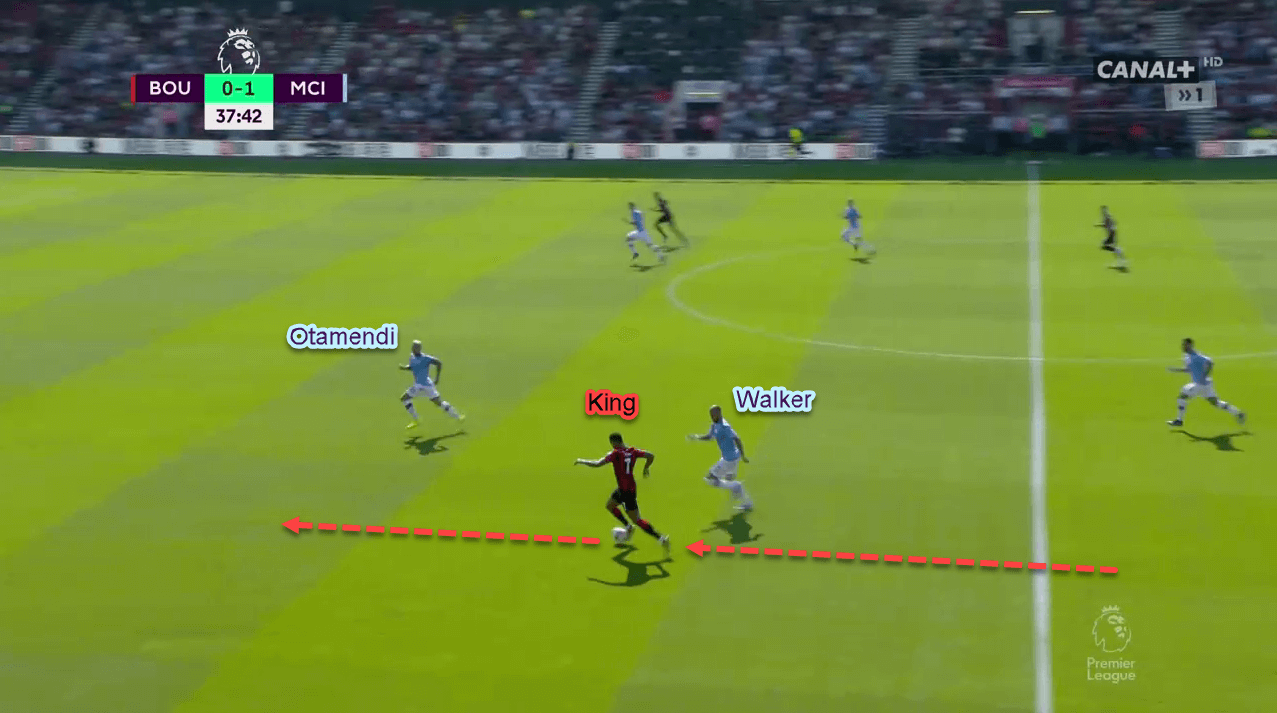
Bournemouth also used their physical superiority against City players. One of the ways they did that was by sending direct long balls to their striker against Otamendi. Otamendi was targeted because he was considered the least physical centre-back from City. Either Callum Wilson and later Solanke would lay the ball off to one of their teammates.
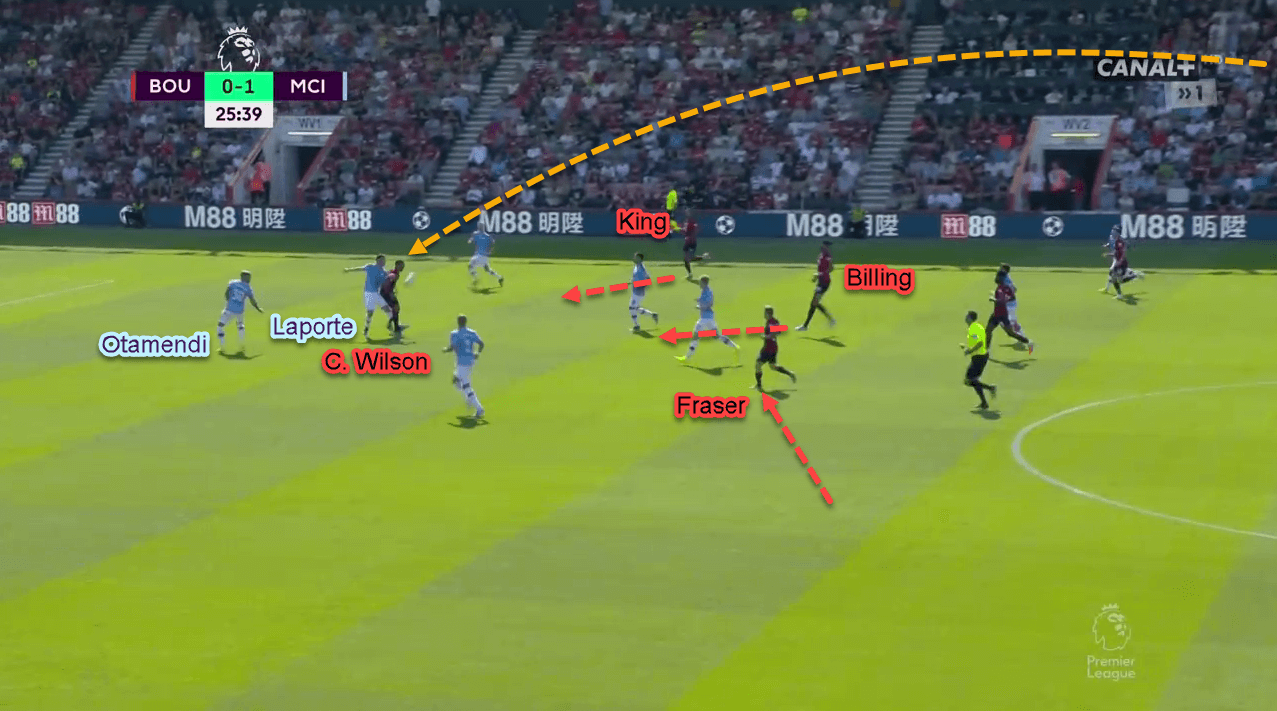
Howe instructed up to three players to support the striker, which consists of two wingers — who both come inside — and sometimes a midfielder (mostly Billing). With this set-up, Bournemouth would have up to four players in an advantageous area against four or five City defenders. Unluckily, they couldn’t take the opportunity from this approach.
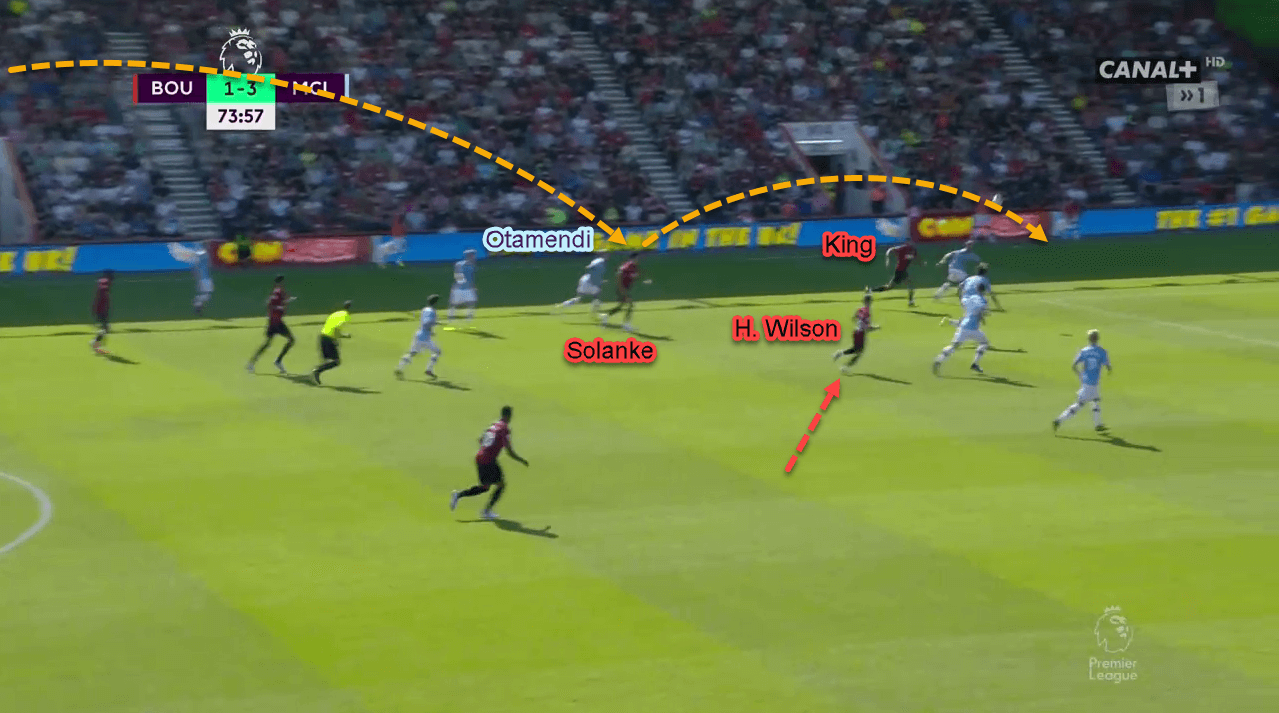
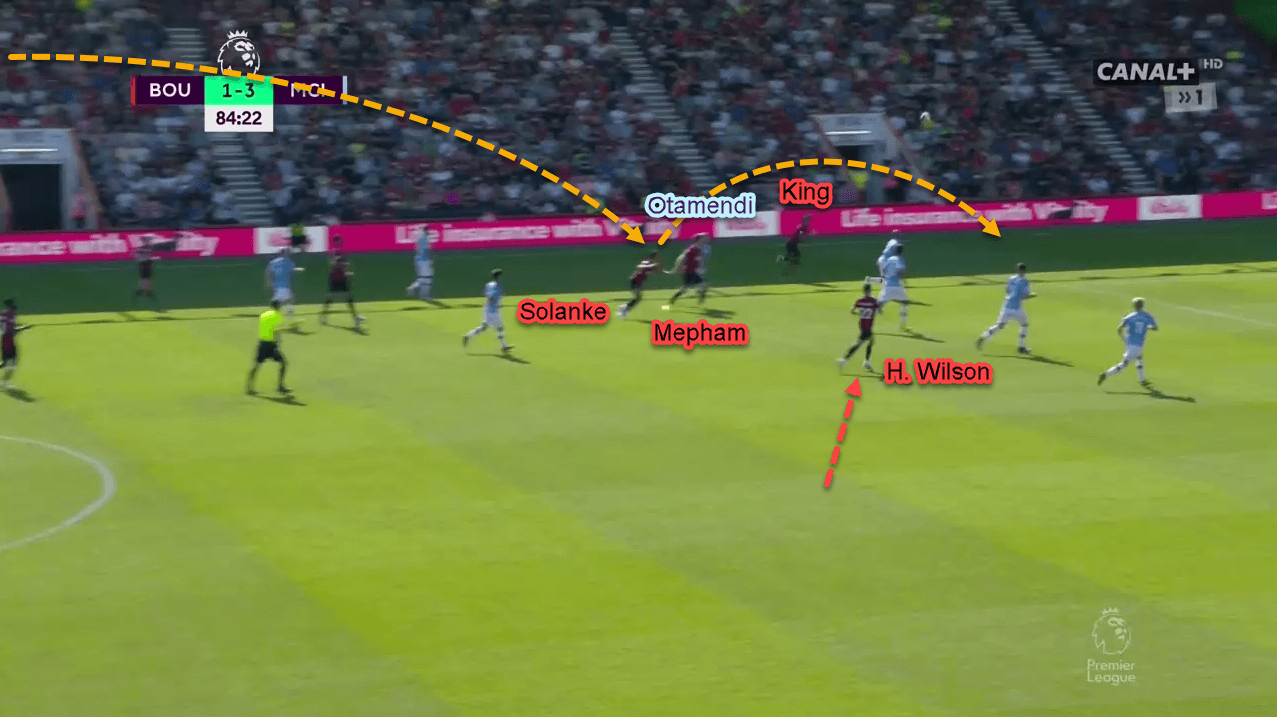
Two sides of throw-ins
Another approach Bournemouth used was by long throw-ins. Cook would be tasked to take the long-throws with multiple targets inside the box. Callum Wilson or Solanke, Aké, Billing, and King were the usual targets inside the box, with Fraser or Harry Wilson just outside the area to receive potential rebounds.
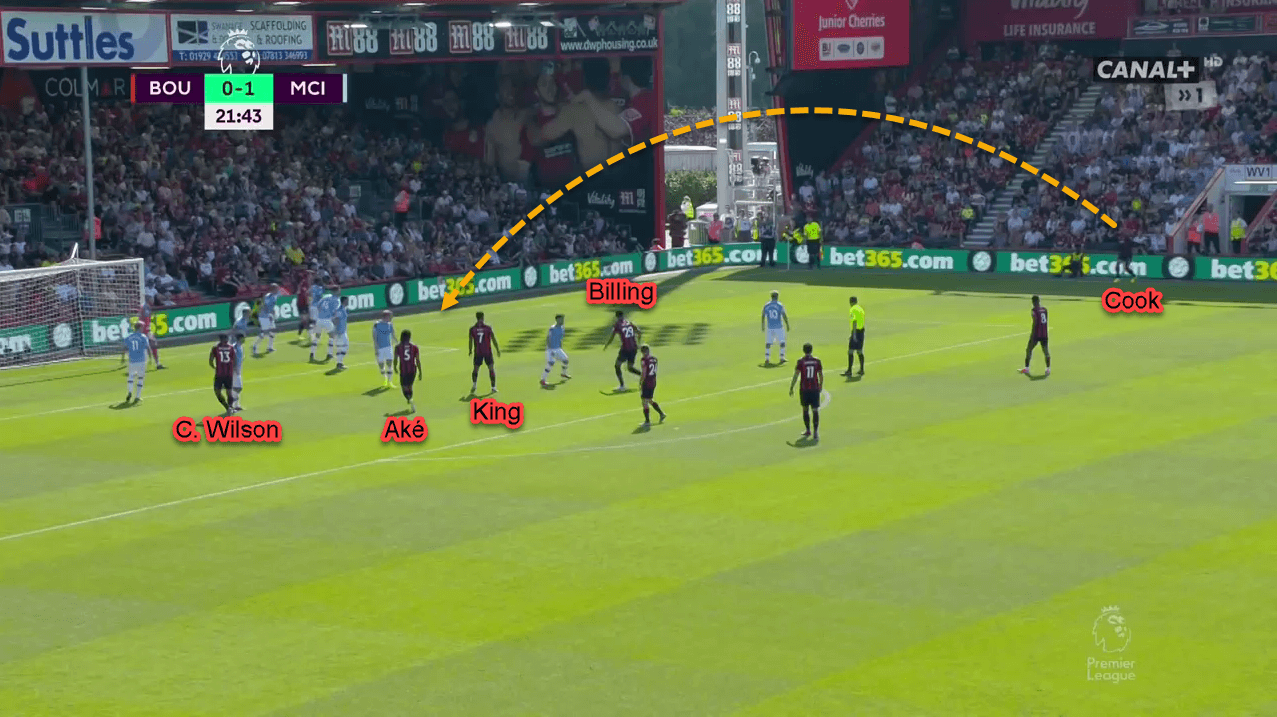
Even though The Cherries had physical superiority against City in such situations, they couldn’t capitalise through this advantage. In fact, it was City who punished one of Bournemouth’s throw-ins to kill the game off.
At one point in the second half, Bournemouth got a throw-in just next to their penalty box. City reacted aggressively by putting some players to press the ball to win it quickly. The aggression paid dividends; Callum Wilson — being 13 cm taller— unpredictably lost the aerial duel against Zinchenko. Agüero then received the loose ball, combined with Silva, and eventually scored the third goal to send City home and dry.
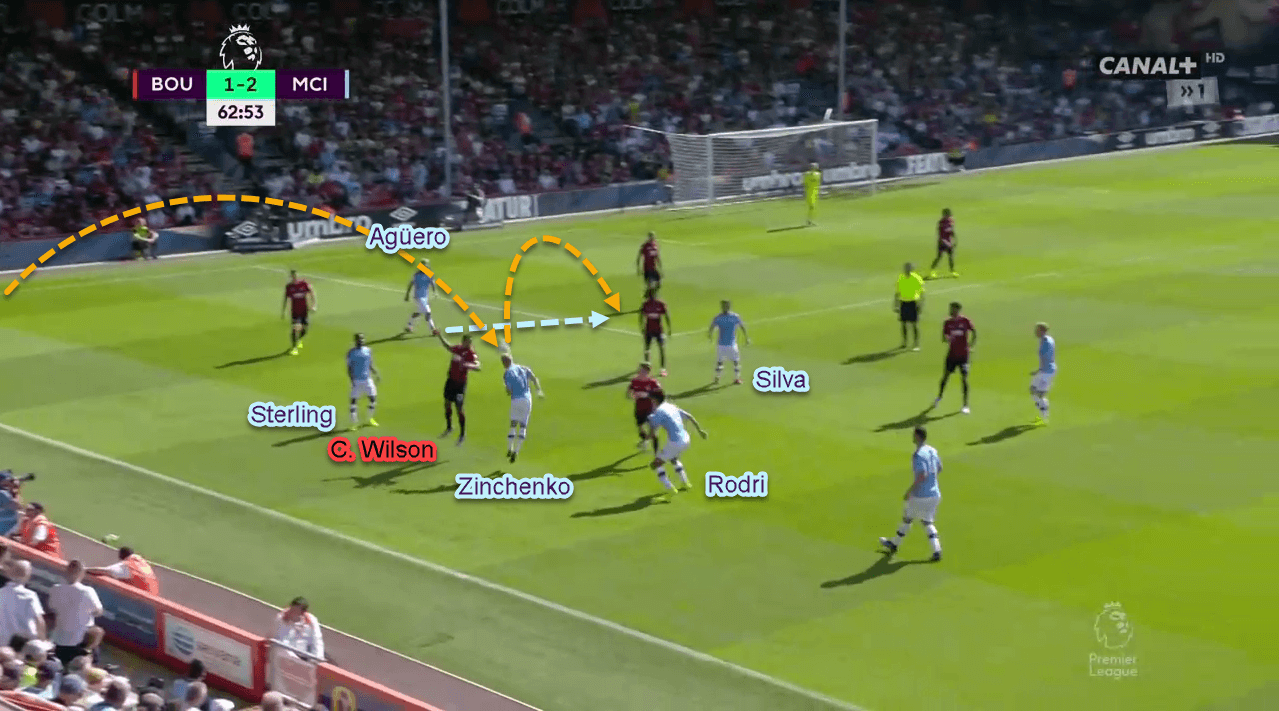
Conclusion
Through this analysis, Bournemouth showed that any team still can damage City, especially through physicality. However, Guardiola’s City and their clever tactics proved that they are still too powerful for bottom-half sides, although having one of the smallest-sized squads in the league.
On paper, City has scored 10 goals from three games this season; making them the first team to do so. Yet, they needed about 63 shots to achieve this feat. Guardiola needs to find a way to make his team more clinical in front of the goal, as well as making his team more sound defensively even with relatively small-sized players.
It’s too early to mention a threepeat but if City can work on those areas, nothing is impossible for them.

If you love tactical analysis, then you’ll love the digital magazines from totalfootballanalysis.com – a guaranteed 100+ pages of pure tactical analysis covering topics from the Premier League, Serie A, La Liga, Bundesliga and many, many more. Buy your copy of the August issue for just ₤4.99 here.

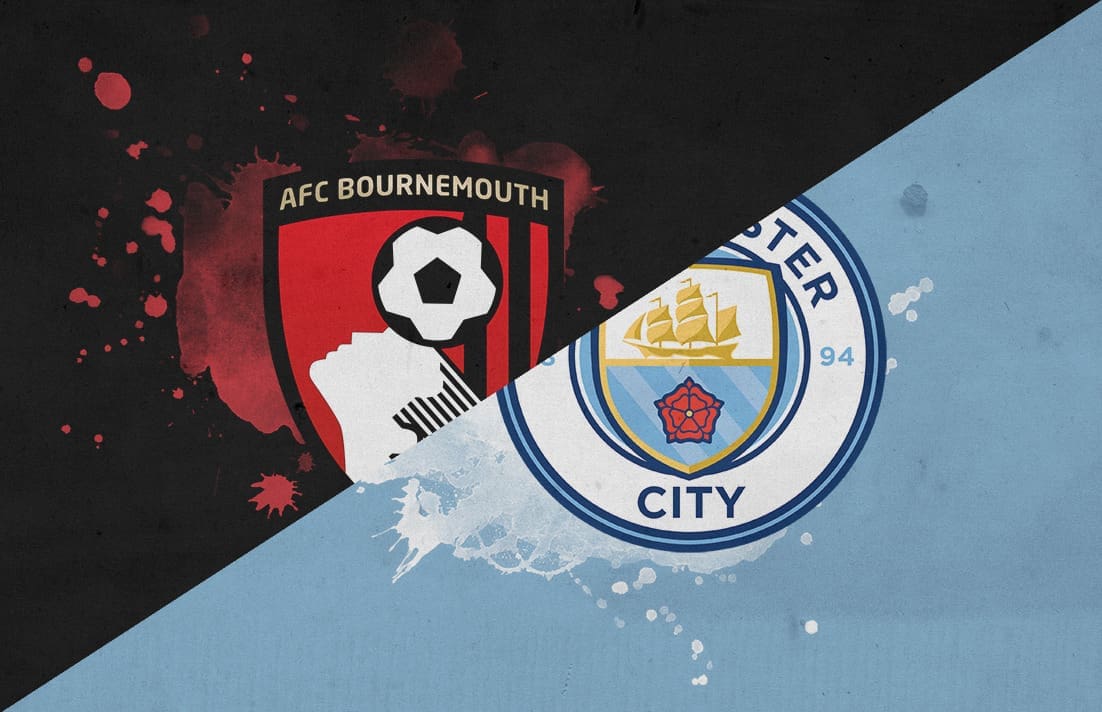



Comments